Headphone.Guru’s coverage of CanJam at RMAF 2015 continues with Arlindo Borges’ show report.
CEntrance:
Michael Goodman’s CEntrance has been a fan favorite amongst Head-fiers for many years. CEntrance has released various great products such as the DACmini PX $999.99 USD, the HiFi-M8 ($699.99 USD), and the Mini-M8 ($599.99 USD). At this year’s 2015 CanJam, Michael was showcasing yet another great CEntrance product, the DACport HD.
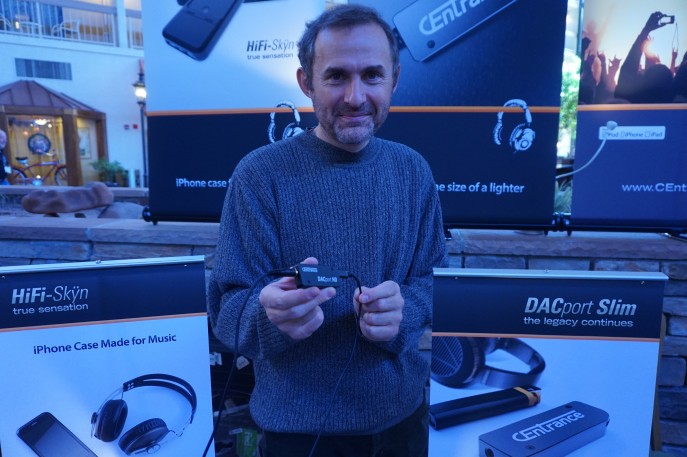
A proud Mr Goodman
Based on the original, highly popular, DACport ($249.99 USD), the upgraded HD version is smaller and more potent sounding. It can play bit perfect 384 kHz DSD files, utilizes the AK4490 D/A converter, has a side-mounted rotary volume control, and an 1/8 inch headphone out jack. Its chassis is constructed of durable aircraft anodized aluminum. It is plug and play with both Mac and Linux with drivers available for Windows. The DACport HD can power most headphones on the market, and is USB powered by your laptop/PC/Mac. The voicing of this little wonder is very neutral and dynamic. In my opinion, considering its price point of under $200 USD, the DACport HD is a little gem for those seeking a transportable DAC/amp combo. A definite must have for those seeking great sound in a small easy to carry package.
HeadRoom:
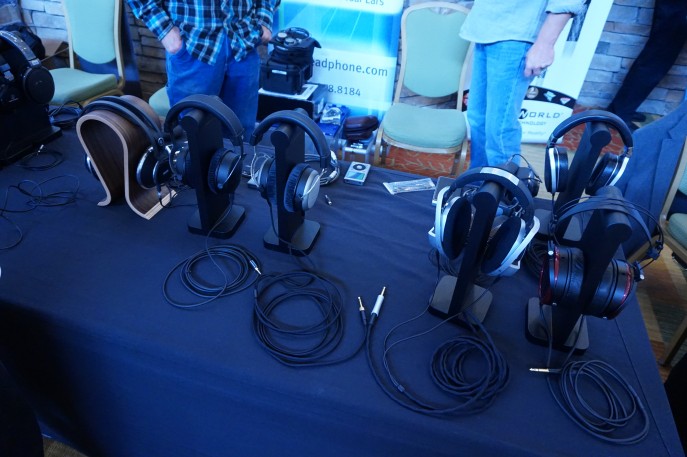
As well as manufacturers, some of the better-known merchants of personal audio were also present at CanJam 2015. One of the more respected merchants of the hobby, is HeadRoom. HeadRoom has had a strong online presence amongst many Head-Fiers for many years. They have been a site known for exemplary integrity, great pricing, and a wide selection of audio gear. Manning the booth at this year’s CanJam was Mr. Jamey Warren. I had quite a nice time chatting with Jamey; he’s quite an approachable man to say the least. I spent quite a long time at the Headroom booth due to the display table being covered from end-to-end with various goodies, that would easily make any Head-Fier drool. Some of the highlights available for everyone’s listening pleasure: the Sennheiser HD 800, the AKG K812, the beyerdynamic T1, the MrSpeakers ETHER, the Oppo PM-1, and the Audioquest Nighthawk. Needless to say, the HeadRoom table was very busy throughout CanJam, with curious headphone lovers eagerly sampling different gear. Overall, it was a fun time hanging out at the HeadRoom table. For those of you who have never heard nor visited the HeadRoom site, I highly recommend a quick look. I doubt you won’t be impressed with their wide selection of gear and their pricing.
Comply:
For the IEM guys, of which I am a proud card carrying member, the company Comply needs no introduction. Comply has been quietly gaining respect amongst the universal IEM crowd for some time. Their high isolating, super comfortable viscoelastic polyurethane foam tips, which are custom fitted according to the IEM brand, have been a popular item amongst many of us for years. These foam tips are thirty times softer than the regular OEM silicone ear tip and utilize an innovative memory-foam technology that helps enhance your listening experience. For those out there who are part of the custom IEM crowd, Comply now has a product for you. One of the main aggravations of owning a custom is that eventually all customs will one day not properly fit/seal due to the users ear canals changing. In enters Instaraps ($17.95 USD). Instaraps is a series of ultra-soft foam strips that can be cut to size that utilize the same memory foam technology that comply tips are famous for. Are you having trouble maintaining a proper seal with your custom and don’t want to go through the time and hassle of getting your custom refit? Then simply cut a Instarap strip to size and glue it to the area of the custom that’s loose and not sealing properly thereby guaranteeing a proper fit. Overall, I was impressed and I made sure to grab myself a couple of packets of Instaraps for the eventual day when my UERM or Noble 4 begin to exhibit fit issues.
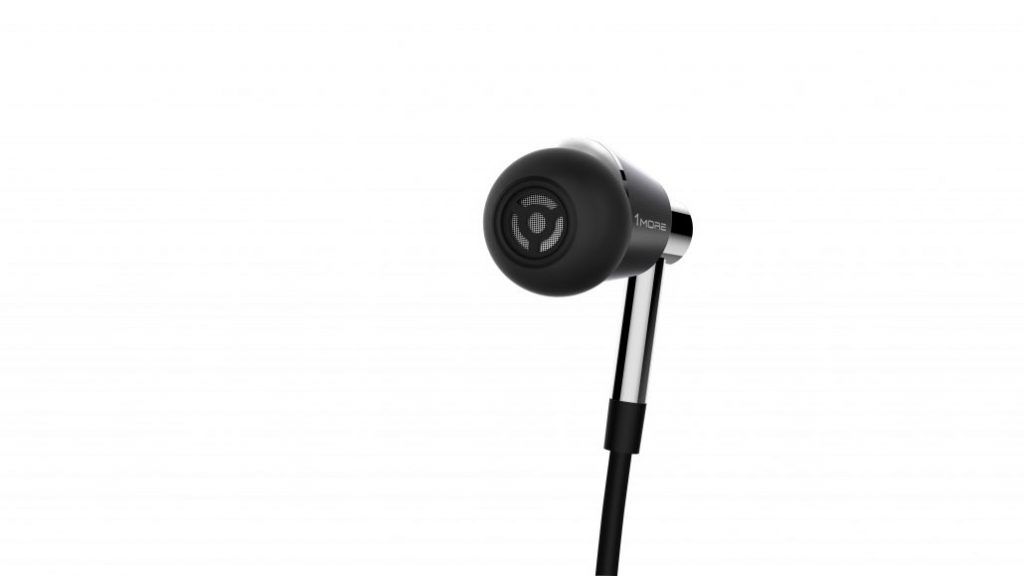
HiFiMAN:
Out of all the displays in CanJam, HiFiMAN was one of the bigger and busier displays. Dr. Fang Bian and company showed up loaded with many of the top products that HiFiMAN is famous for. Across their display table were their top DAPs (the HM901U and HM801U), along with their DAP dock, the Dock 1. If that wasn’t enough, they also brought along their entry level amp, the EF2A, as well as their state of the art, behemot- sized amp, the EF1. Plugged into the EF1 was the star of the show, the current HiFiMAN flagship, and Rocky Mountain International Press Award winner, the HE1000. Off to the side of the HE1000/EF1 combo were two new headphones. The first headphone was a small on-ears design, that was still in development and as yet was far from reaching release. For me, the most intriguing was the second headphone…the soon to be released Edition X. A result of trickle down technology, the Edition X, in my opinion, reminded me of a baby HE1000. The most impressive aspect of this new headphone, was its ability to be easily driven by a DAP. As of yet final MSRP remains to be announced, but HiFiMAN was able to confirm that the new Edition X would be priced under $2000.00 USD. Overall, I walked away with a smile on my face thinking how I was going to go about saving up for an Edition X or HE1000. I have no doubt in my mind 2016 will be a break out year for HiFiMAN.

Fostex:
Fostex has always been one of my personal favorites of mine and I was quite thrilled to find out they were in attendance at this year’s CanJam. Upon reaching the Fostex booth I made a bee line for their flagship headphone, the TH-900. The TH-900 is a beautiful headphone manufactured from premium materials that sets it apart from many other headphones on the market. Its deep red cups that show like jewels and acted like beacons attracting a lot of attention from passing headfiers. V-shaped sound signatures have never been my favorite but in the TH-900’s case, it was a V shape that impressed me.

Alongside the flagship was another behemoth sized amp that made the HiFiMAN EF1 look small in comparison, the HP-V8. The HP-V8 is Fostex’s soon to be released flagship tube amp, and I immediately fell in love its refined old-school look and rich sound. As impressed as I was with the TH-900 and HP-V8, what caught my attention the most was Fostex’s newly revamped RP line: the T20RPmk3, T40RPmk3 and T50RPmk3. The old T50RP has been a little darling amongst headphone modders and I’m a proud owner of a T50rp mod, the Paradox. What’s most interesting about these new headphones, was the fact Fostex redesigned and revoiced these headphones based on feedback from their customer base. I spent some time with the new RP lineup and have no qualms in saying that the update is a good one, and well worth investing in. All three headphones can be had for a rock bottom street pricing of $139.99, $129.99 and $119.49 respectively. In my opinion, all three headphones are an excellent value for those looking for a great sounding entry level headphone.
Head-Fi.org:

If it wasn’t for Jude Mansilla and his site, Head-Fi.org, there would be no CanJam. While wandering around CanJam I got an opportunity to meet and shake the hand of Jude Mansilla. I never knew much about Jude beyond the bits and pieces I could piece together online. Jude is a very approachable guy. He has a friendly demeanour and above all, like the rest of us, he’s a headphone junkie. The joy for him though isn’t so much the gear but instead the pleasure he gets from the sense of community he has created. Under his hard work, Head-Fi has become one of the largest online forums discussing headphones and other personal audio equipment. Over the years Head-Fi has grown from a small group of online headphone audio nerds, into a major player in the personal audio scene. With an international user base of tens of thousands of users, many manufacturers turn to Head-Fi for user feedback as well as self-promotion. Many thanks to Jude and his trusty sidekick, Warren Chi, for putting on such a spectacular show.
Creative:
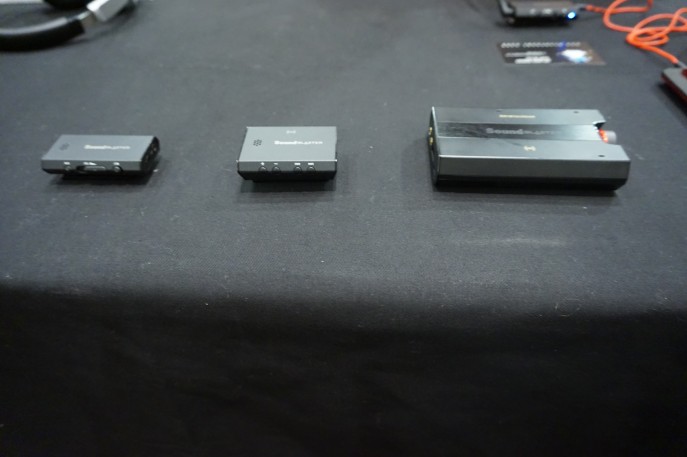
Creative was on hand showcasing a wide selection of their product lineup. Creative is better known among the PC crowd for their PC audio cards, such as the Sound Blaster ZxR and Sound Blaster Zx. Over the last little while, the company has shifted their attention to creating not only sound cards, but also standalone desktop and mobile solutions, as well as a small IEM lineup. Creative would show up at CanJam with the heavy hitters of their product lineup. Taking center stage would be their Sound Blaster lineup, the E1 ($49.99 USD), E3 ($129.99 USD), E5 ($199.99 USD), X7 ($399.99 USD), and X7 Limited Edition ($499.99 USD). The X7 and X7 Limited Edition offer a large feature set that would make any tech geek swoon while the E1, E3, and E5 offer solid mid-tier performance. The Aurvana In-Ear 3 and 2 were also on display, but not offered for demo. Based on what I was able to demo, I have no qualms in recommending the Creative lineup as very good sounding, mid-tier level gear.
Campfire Audio (ALO Audio):

ALO Audio is another favorite of mine, and I have been a huge fan of their RX amp lineup. Last year ALO added more weight to their long resume of great audio gear by creating their own IEM product line, christened Campfire Audio. The lineup is made up of three universal IEMs: the Orion ($399.00 USD), the Lyra ($749.00 USD), and the Jupiter ($899.00 USD). The Orion is a single balanced armature affair, housed in a CNC enclosure and comes equipped with a removable beryllium MMCX cable. The Lyra houses a 8.5mm beryllium PVD transducer in a ceramic enclosure, and comes equipped with a removable MMCX cable. The Jupiter is the flagship of the lineup with a quad-balanced armature configuration housed in a CNC enclosure, and comes equipped with a removable beryllium MMCX cable. All three IEMs sounded spectacular to my ears but for me, it was the Jupiter that stole the show. So much so I intend on ordering myself a pair later on this year. ALO Audio, in my opinion, has always produced some great sounding gear and the Campfire Audio line is no exception.
Echobox:
When I first found out I was to cover Echobox for Headphone.Guru, I was puzzled. I had never heard of the company. Upon arriving at their booth I would be pleasantly surprised to find out, that Echobox is a new start-up whose products are a new streaming DAP as well as a universal IEM.
The Finder X1 is Echobox’s first exploration into universal IEMs. The IEM housing is constructed of titanium and houses a German made PEEK diaphragm. The housing is light, conical in shape, and quite easy to insert and attain a seal. The cable is silver plated, has a neck cinch, and a volume control that can be used for both Android and iOS. The IEM is neutralish sounding and its main strength is clear and wide open mids.
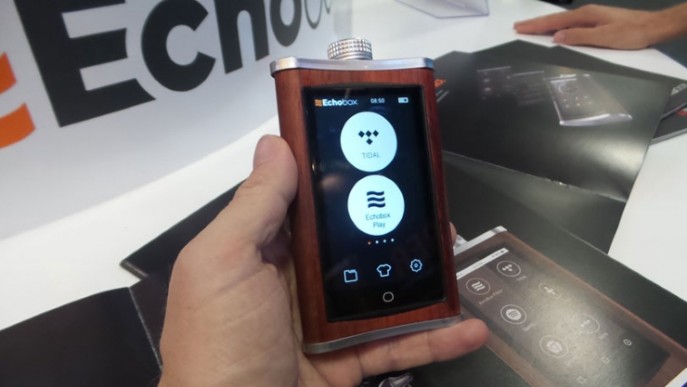
The Explorer X1 is a funky looking, flask shaped, wood finished, streaming player. The players OS is Android 4.2. Upon first boot the user is given the option of using the Echobox skin or the pure Android interface. Also, the company plans to release an update in 6 months which will enable the use of OTG cable to hard drive for expanded external memory. The player comes with a well sized touch screen and all OS navigation is done via the touch screen. Battery life is an excellent 10 to 14 hours. The X1 supports DSD and has TIDAL integration, with a free three-month TIDAL subscription thrown in to sweeten the deal for the end user.
All MSRP is yet to be announced, as both products are still in development, but are expected to be released sometime later this year. Both products sounded quite good, and I was especially impressed with the X1.
JDS Labs:
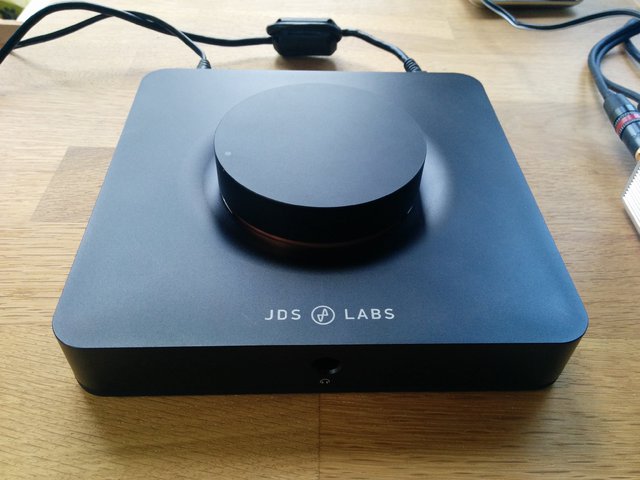
JDS Labs is known amongst head-fiers for its O2 and Altoid-tinned CMoy headphone amplifiers. Recently JDS decided to build upon the O2 mystique and build a new amp using the same philosophy that lead to the creation of the O2. The Element ($349 USD) was first released in June of 2015, and is another funky looking piece of gear that’s square shaped and has a massive volume control knob located on the top of its chassis. It utilizes the DACPCM5102A chip and the LME4920MAX op amp chip. The big surprise, The Element is a little monster in sheep’s clothing with a power output of a 1.5 watts, making it able to drive anything on the market. Upon hearing it and comparing it to the O2 on display, in my lowly opinion I thought it sounded more refined and dynamic than the original O2. I highly recommend this DAC/amp combo for the mid-fi thrift shoppers out there. For the lowly price of only $349, The Element is a must-have in my book.
Final Audio:
Although they may have been one of the smaller booths, Final Audio showed up at CanJam with all guns-a-blazin’ intent on making a splash. Not only did they show up with their complete sixteen-IEM-strong lineup of universals, but they also came with their new lineup of handmade headphones.

Their new headphone lineup, titled the Sonorus headphone line, consists of four headphones, the SONOROUS IV, SONOROUS VI, SONOROUS VIII, and the SONOROUS X. The SONOROUS IV and SONOROUS VI are currently available on the market while the SONOROUS VIII and SONOROUS X, are slated to be released in limited quantities on October 6th. Prices range from $1299.00 USD for the SONOROUS IV to $4999.00 USD for the SONORUS X flagship, Even though the VIII and X were the more extravagant looking ones which sounded spectacular, it was the IV and VI that caught my attention the most due to the fact that they are both a hybrid design, that utilize a 50mm dynamic driver and a balanced armature. Overall, I was impressed with all headphones, with the X and the VI being my two favorites from the lineup.
Of the vast lineup of IEMs that Final Audio brought, it was the FI-BA-SS ($999.00 USD) that impressed me the most. Although universal the FI-BA-SS proves that a single balanced armature universal can walk proud amongst pricier multi-driver customs on the market. Anyone who has heard or owned a Final Audio product, knows that Final Audio marches to the beat of their own drum. While other companies try to voice their products to be as neutral or bassy as possible, Final Audio instead goes out of their way to voice their products to sound as closely as possible to horn speakers with the FA-BA-SS being no exception. Final judgement, Final Audio is another company to keep an eye on, and I personally intend to one day add the FA-BA-SS to my collection. The IEM was a marvel to hear.
HeadAmp:
HeadAmp is a very small American company that has earned a lot of respect from both the mobile amp market, as well as the flagship amp market. HeadAmp has been long praised for their Pico line of mobile amp/DACs of which I’m a proud owner. At CanJam, HeadAmp showed up with their two top tier amps, the Blue Hawaii electrostatic amp (5596.00 USD) and the GS-X mk 2 Amp/Pre-Amp ($2796.00 USD).
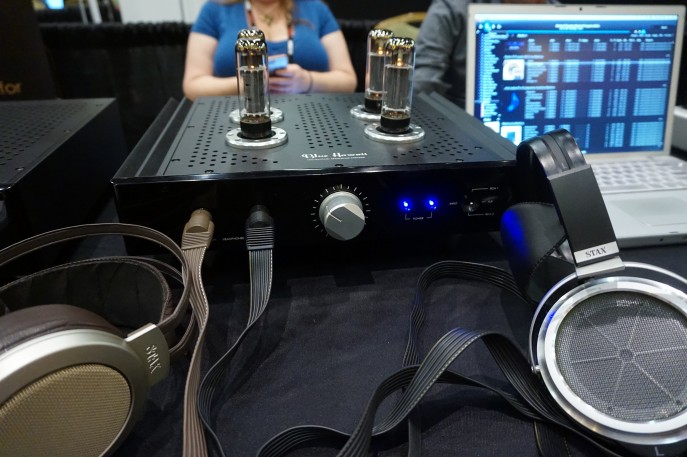
The Blue Hawaii is a hybrid amp with EL34 output tubes and is the flagship product of HeadAmp. Over the years, it’s become a fan-favorite amongst the STAX crowd and after hearing it I can understand why. I’ve heard many amps over the last few years, but have yet to hear what I heard at CanJam when I heard the STAX Omega paired with the Blue Hawaii. Listening to it I could only think of three words; realistic, detailed, and effortless. The Blue Hawaii is a very special product, in my opinion. As such, I can only say that I hope to one day, be able to own my own Blue Hawaii down the long winding road.
The GS-X is HeadAmp’s top-of-the-line amplifier for either single-ended or balanced dynamic headphones, or for pre-amp use. It’s known to have one of the lowest noise floors of any amplifier, due to its separate power supply chassis which keeps transformer fields away from the amplifier circuitry. The amp and power supply are each housed in a brushed aluminum enclosure with each enclosure having a hand-finished 1/4″ aluminum front panel. For those interested in getting away from the traditional black or silver chassis, there are various color options available. Overall, as well as being very well priced, the GS-X was one of the better amps I’ve heard. In the end, it was the Blue Hawaii that stole the show for me though.
Jaben (Lotoo Paw):
Jaben is a well-known audio chain from Asia, that has slowly begun to become more and more of an online force in North America. Over the years, Jaben has been instrumental in providing many a hard-to-get product to various audio enthusiasts in Europe and North America. This year Jaben came to CanJam bringing two of their newest Asian-based players, the Lotoo Paw Gold and Lotoo Paw 5000. Although the name Lotoo is unknown in the west, the company is very well-known in China and currently controls 75-85% of the broadcast market. The Paw Gold and Paw 5000 are Lotoo’s first foray into the audiophile market.
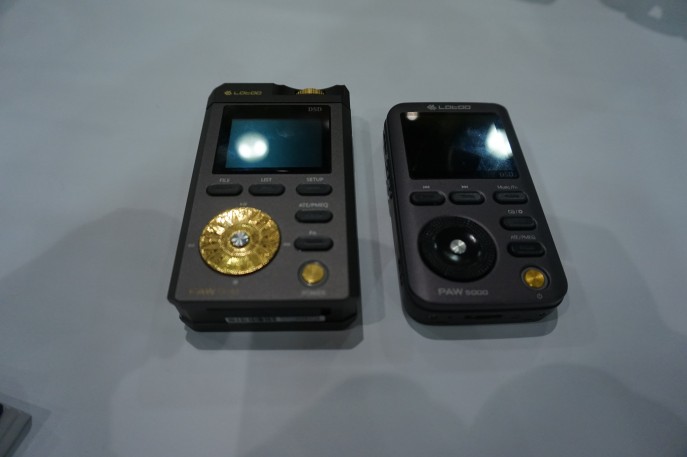
Both the Paw Gold and the Paw 5000 support DSD (DFF/DSF/ISO)/FLAC/WAV/AAC/ALAC/MP3/WMA etc., have Bluetooth A2DP support, a balanced 2.5mm headphone out, two gain settings, two output impedance settings, a battery life rating of 10 hours, USB 3.0, and a Parametric EQ. The OS installed on these players is a proprietary OS which boasts a blazing fast boot up time and feels quite snappy when navigating.
The screens are not touch sensitive and all navigation is done via the buttons and scroll wheels. When manipulating the volume knob, both players will raise/decrease the volume in increments of half a decibel, making it quite easy to find the sweet spot, no matter what gear you’re using. Something important to note, neither player has internal memory therefore the user is limited to SDCards. On a side note, Lotoo Paw and Jaben both claim that both the Gold and 5000 can support up to 2TB of expandable memory.
Both players had similar tuning; very neutral, with the 5000 having a slightly more playful and coloured mid frequency presentation, when compared to its big brother. The Gold, besides being almost dead flat neutral, was the more dynamic sounding DAP of the two. The big difference between the two was micro detail retrieval. The Gold dug deeper and poured out far more of the music’s nuances. I wasn’t expecting much from Lotoo Paw, but in the end I walked away quite impressed…especially with the Gold.
Cardas Audio:
Cardas Audio came to CanJam to promote their soon-to-be-released earphone, the A8. Although similar in shape as the EM5813, generally speaking, the E8 is a completely improved universal IEM. Its body is an ABS blue rubberized body which incorporates the EM5813’s golden spiral curve. Because of its shape, weight, and size…the A8 is quite easy to insert into ones ears and a seal is very easy to attain. Inside the housing is a 10.85mm ultra linear, contour field, dual magnet driver. The cable is lightweight, flexible and has separate conductors for each channel. Also, the cable can be disconnected allowing the user to swap out the single end cable for a balanced cable. While listening to the A8 the only words that came to mind was the phrase big and deep sound”. The A8 has a large well-defined sound stage with a deep Z axis, giving the music a heavily layered 3D like sound which is an excellent attribute to have with overly busy music. It easily ranks up there in depth presentation with other big name IEM’s such as the Final Audio FI-BA-SS, UERM, and Noble Savant. It sounded so good, I penciled the A8, alongside the FI-BA-SS and Noble Savant, into my list of IEM’s I had to add to my collection.
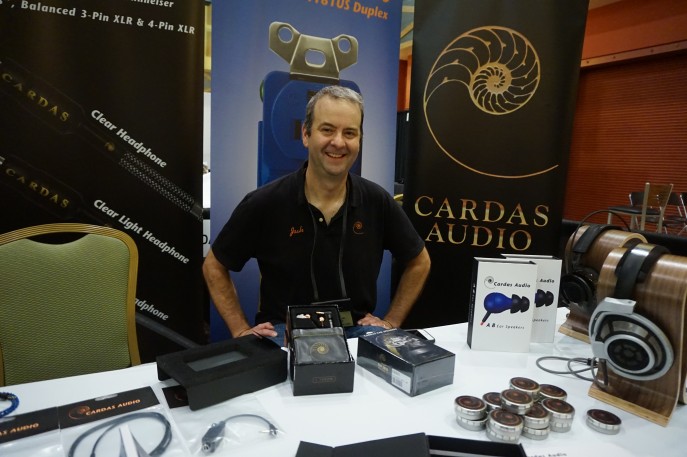
Cary Audio:

Cary Audio is well-known amongst the speaker crowd as a top tier hi-fi brand. That aside, their digital streaming solutions are quite interesting. Recently, the company released a new music streamer, the DMS-500 ($4995.00 USD). The DMS-500 is a music streamer designed to cover all the bases in digital music streaming needs. Once connected into your home network, it plays practically any file from any device you have. It has three USB type-A inputs, one on the front and two on the back, allowing you to plug in anything from hard drives to thumb drives. There’s also an eSATA port, aptX Bluetooth, SPDIF via coax and toslink, and balanced and unbalanced analog outputs are available. Also, if you’re like me and like to veg on the coach when mellowing to your music, the streamer can be controlled via any UPnP app. 32/384 PCM and DSD up to 256 are supported on this streamer. As well, it will up-sample any file from 44.1 to DSD 256. The DMS-500 is a very interesting and innovative product to say the least. It’s a product that opens up a lot of possibilities when one considers what could be done once this jack-of-all-trades music streamer is mated into a headphone rig. In my opinion, a definite must have for the digital streaming music crowd.
iFi Audio:
For those not in the know, ifi Audio is a well-known name in Head-Fier circles. They first began gaining a strong following a few years ago when they released the first generation iCan, a product I proudly used to own. Their approach to a good product, minimalist, well-constructed, and a pristine looking form factor coupled with great audio at an affordable price. The one thing I’ve noticed about ifi Audio, the company hates to remain static for too long. This year at CanJam ifi showed up to showcase some new ideas in products.
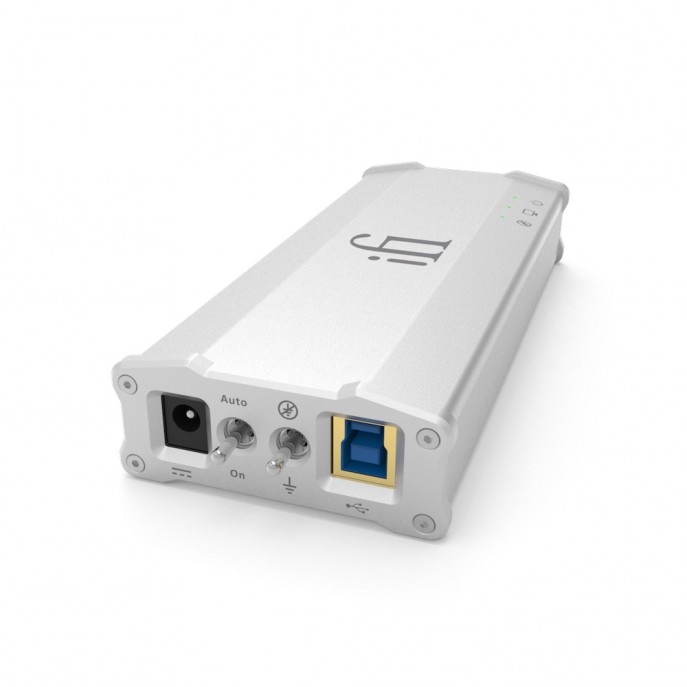
One product that particularly caught my attention was ifi’s recently launched all in one complete USB solution, the Micro iUSB3.0. Put very simply, the Micro iUSB3.0 is the company’s latest solution in their continuing research into clean USB connectivity and signal purity by addressing 8 key problem areas. It corrects signal balance, suppresses frame noise, suppresses packet noise, delivers ultra clean power, eliminates ground noise, corrects impedance mismatch, eliminates USB Jitter, and restores signal integrity. If that wasn’t enough, with two sets of dual-ports, the Micro iUSB3.0 can also operate as a computer audiophile-grade powered hub to feed two devices such as a DAC and HDD. Like all of ifi’s other products, the modular form factor and build quality of the Micro iUSB3.0 is impeccable with clean lines, minimalist appearance, and a straightforward input/output/switch layout. If you’re a computer audiophile who’s looking for an all-in-one solution that completely eliminates jitter resulting in your music sounding cleaner, deeper and more accurate, then look no further than the Micro iUSB3.0















Want to join discussion?
Feel free to contribute!